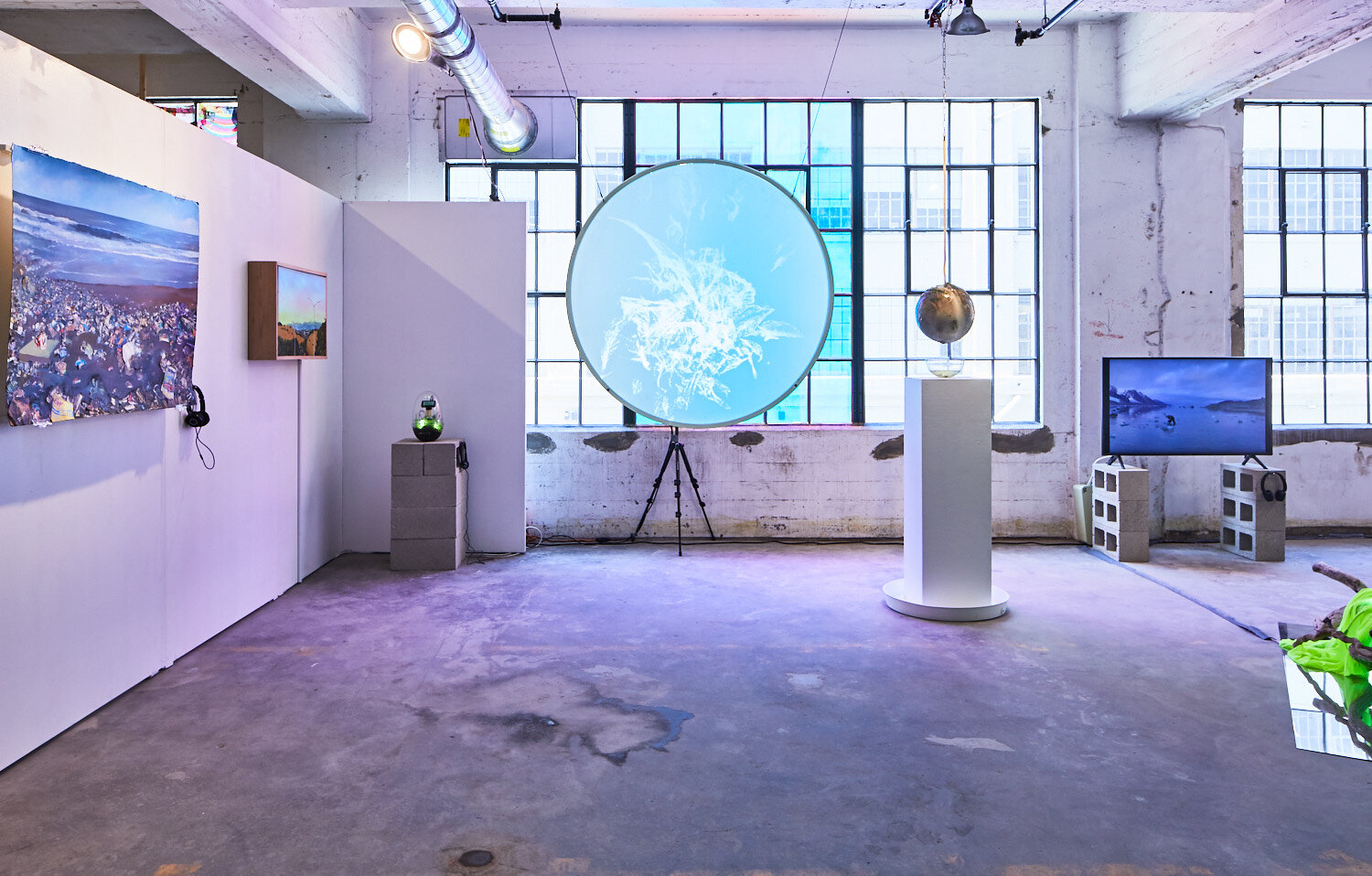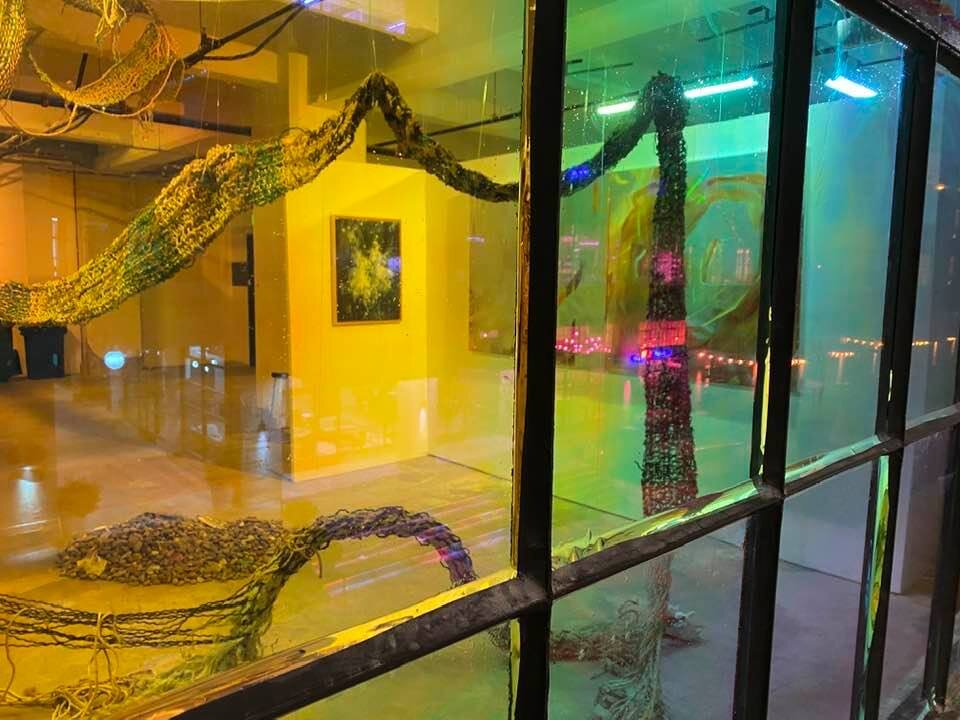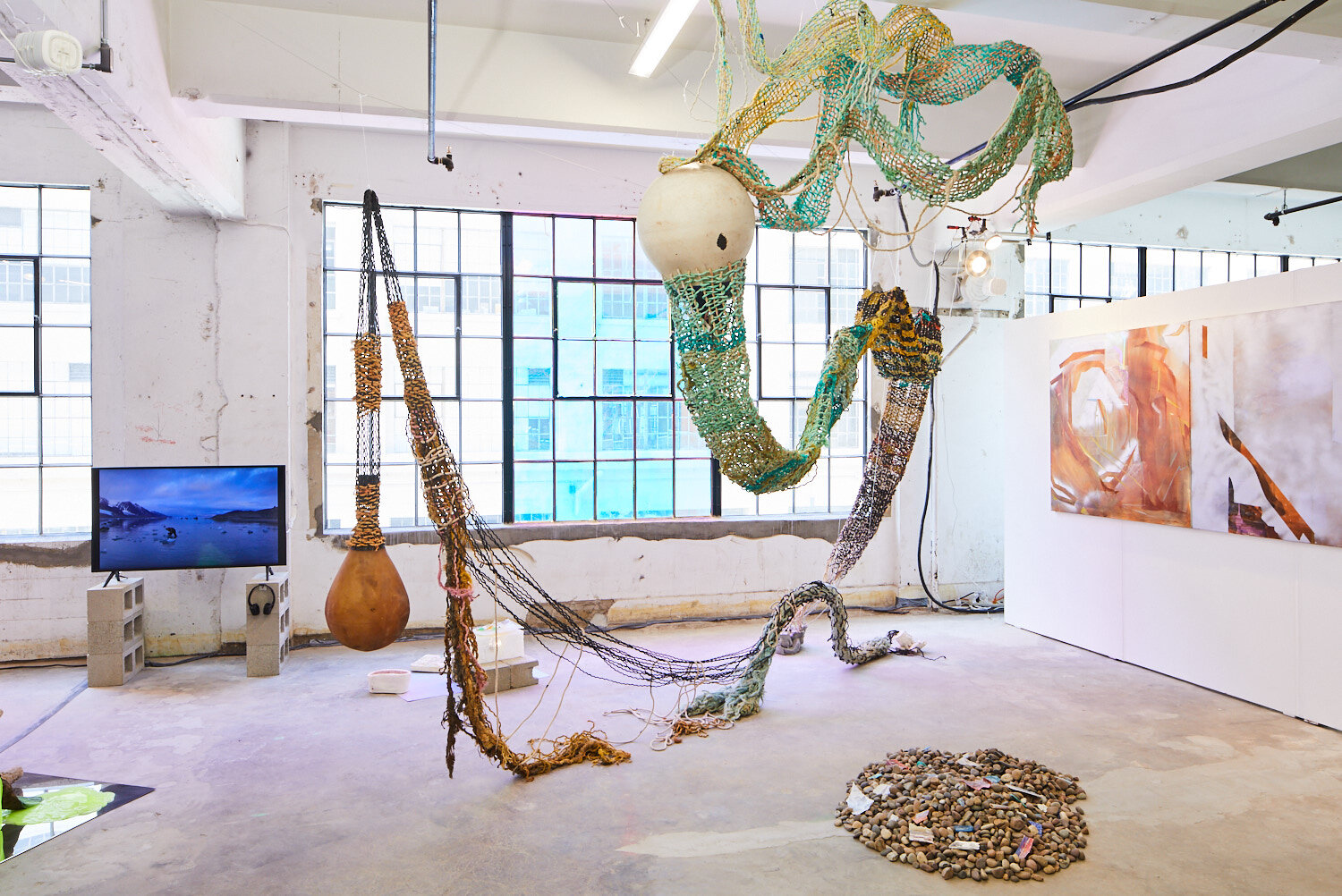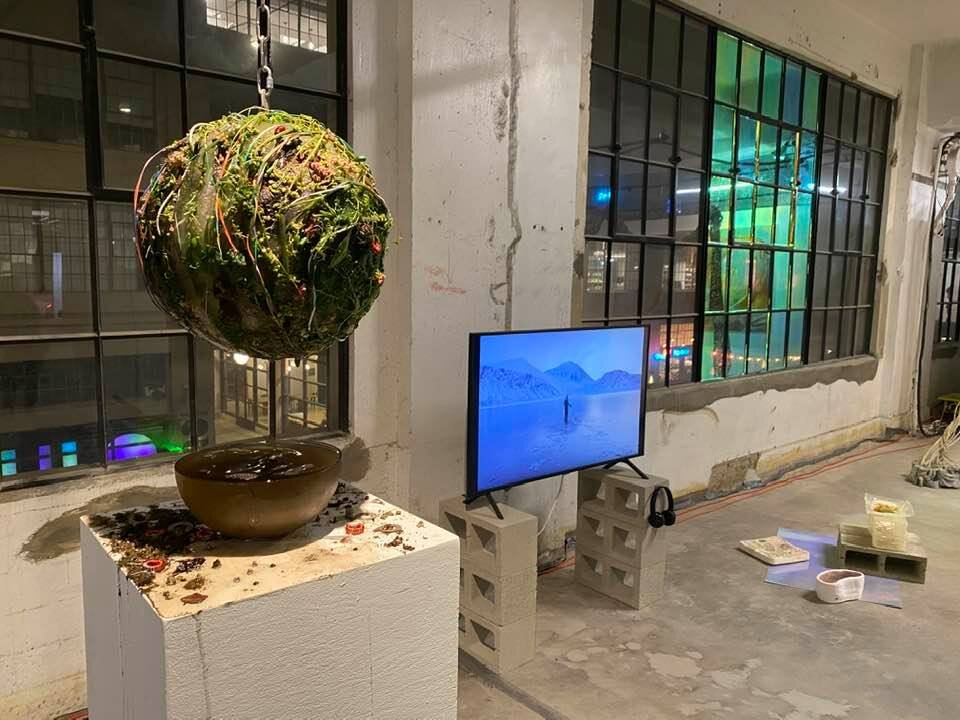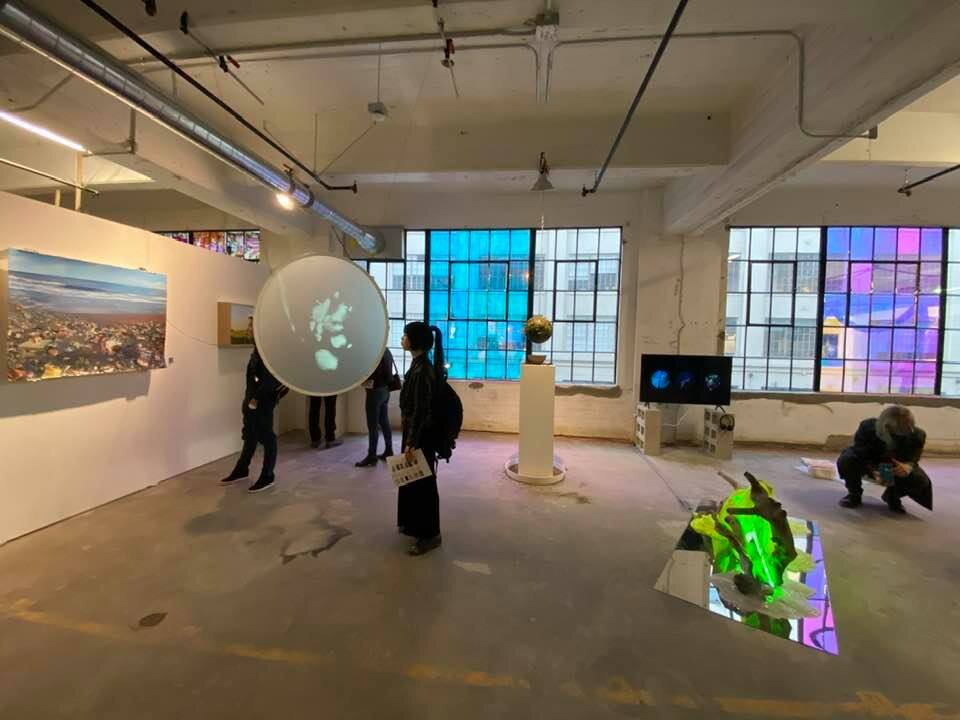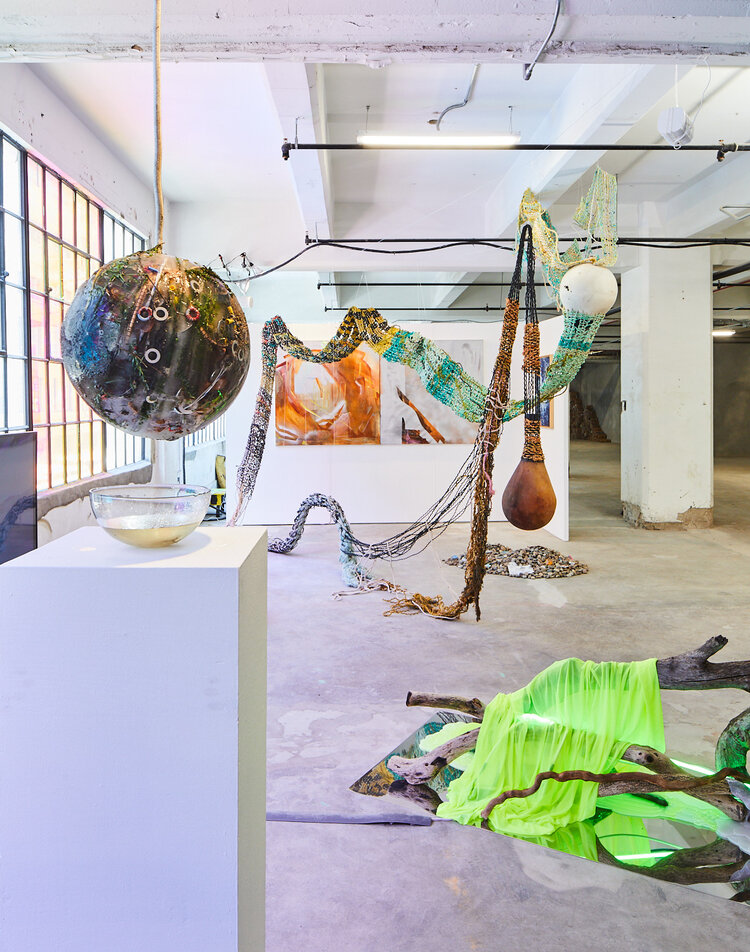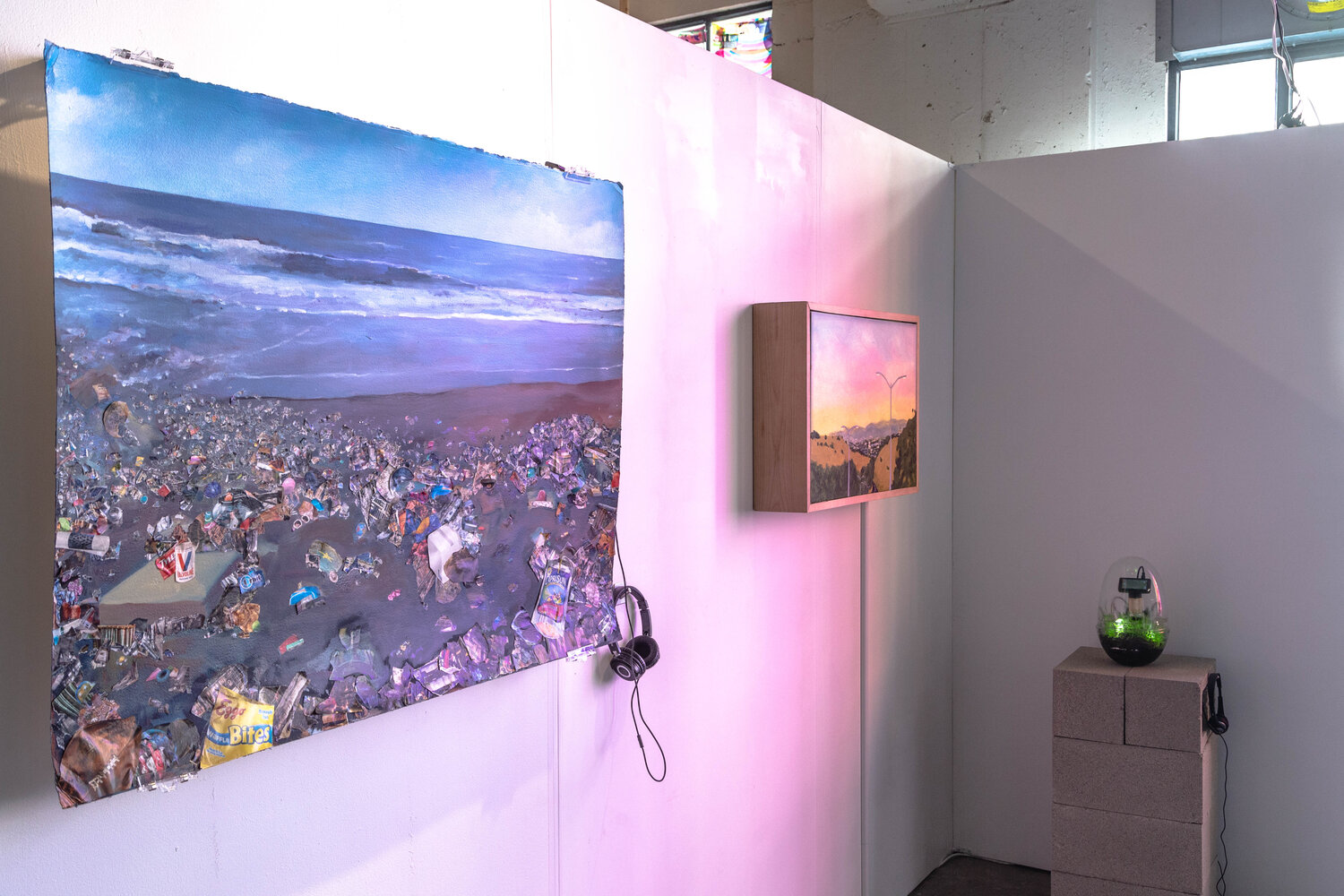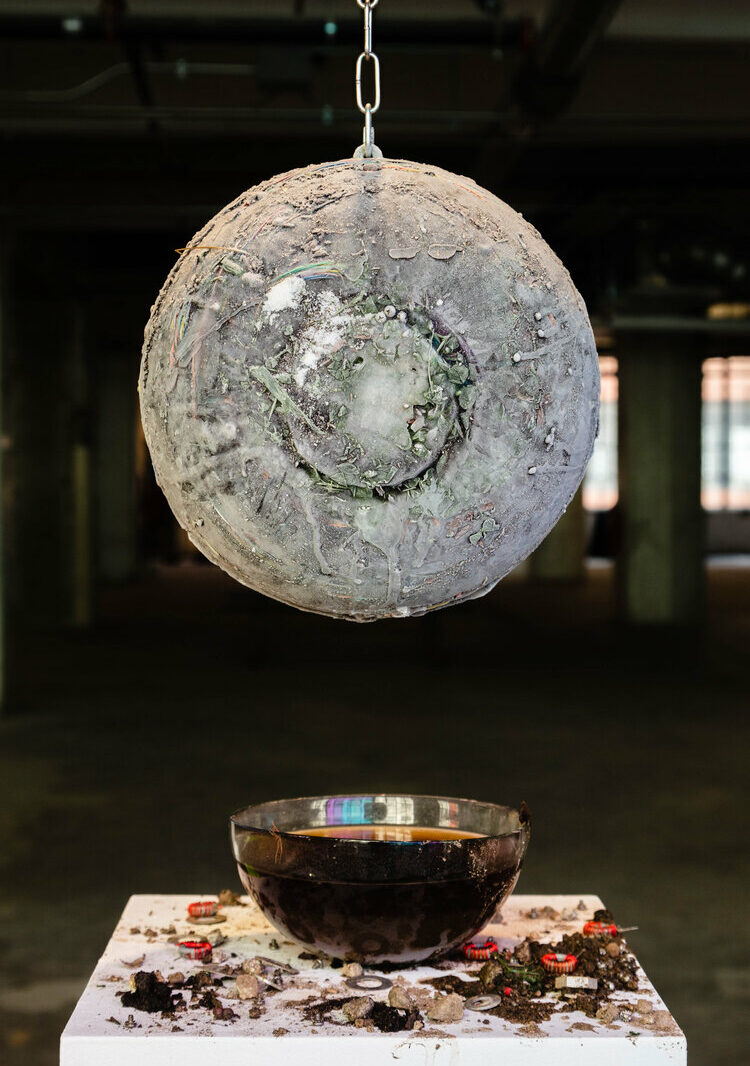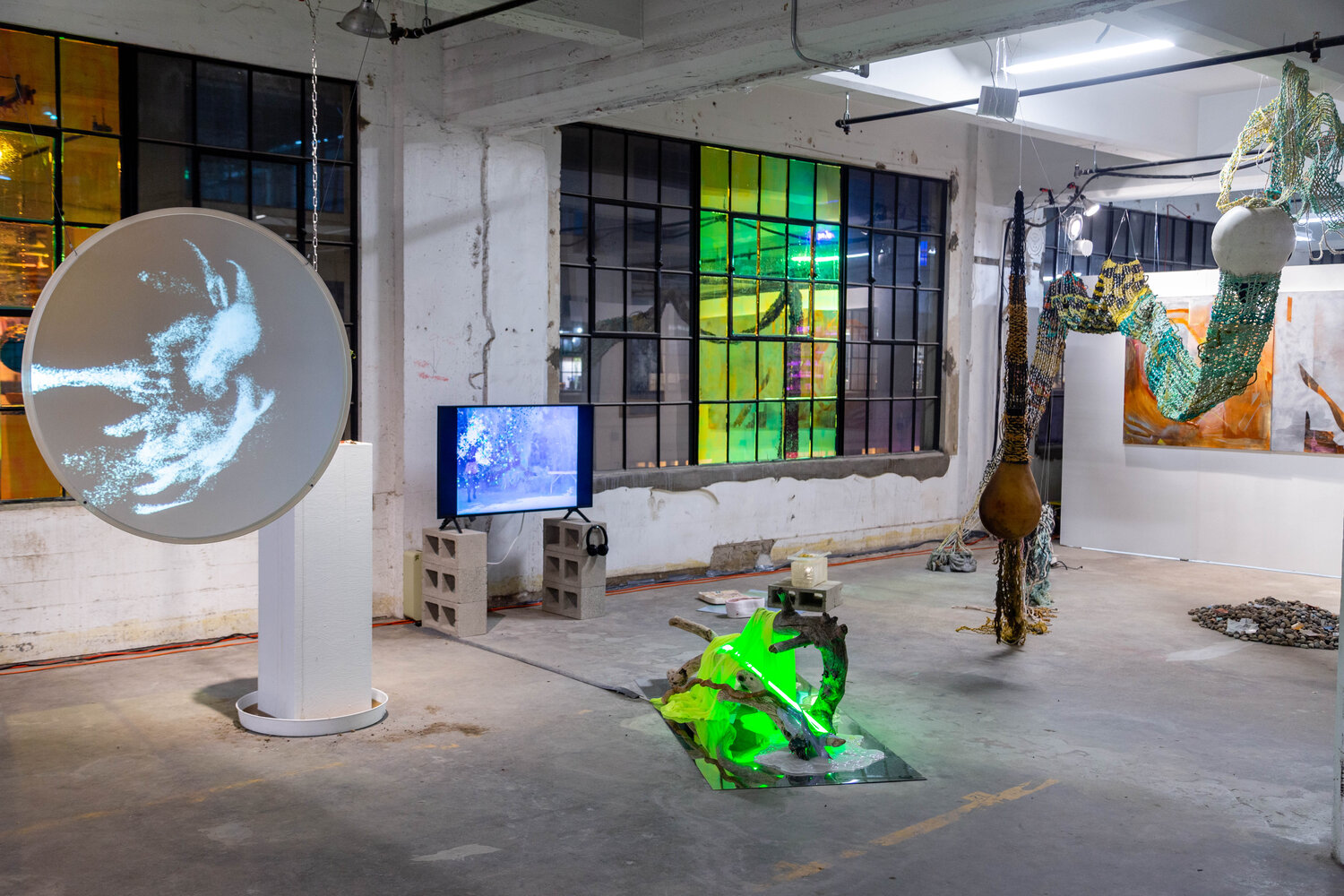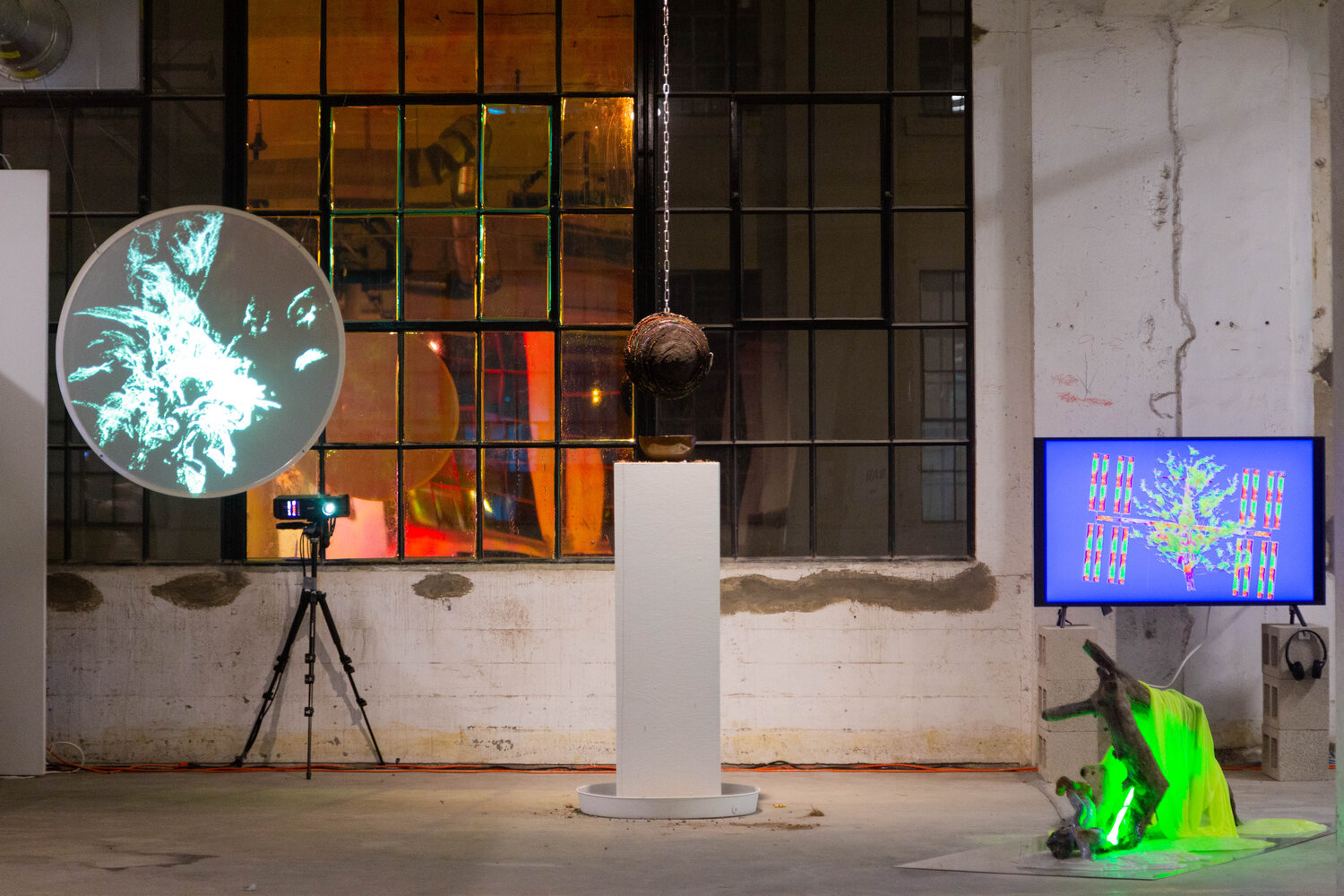Featured Artists: Elena Soterakis, Emma Akmakdijan, Sasha Fishman, Elí Joteva, Maru García, Janna Avner, Isabel Beavers, Sharon Levy, Maria Agureeva, Richelle Gribble, Danielle Parsons, Jenny Rodenhouse, Kate Parsons, Petra Cortright, Annapurna Kumar and Yuehao Jiang.
The “technosphere” is defined as all physical human-made structures such as landfills, houses, factories, smartphones, and computers. Science researchers believe that the technosphere measures the extent to which we’ve altered the planet. Our technosphere now weighs 30 trillion tons — a mass of more than 50 kilos for every square meter of the Earth’s surface. Biotic species are outnumbered by technofossil ‘species.’ The excessive behavior of consumerism, and over-extraction of natural resources leads to mass pollution, animal extinction, war, and degradation of our home planet.
The all woman, digital media organization, FEMMEBIT, and the science-inspired art gallery SUPERCOLLIDER present Technosphere, a multimedia exhibition reflecting on the byproducts of excess: battery leakages seeping into our cities, ice depletion, plastics, landfills — this exhibition incorporates the materials of profuse waste. Plastics found in the Arctic become paintings in a dirt pile, ropes and nets collected on the channel islands form a floating kelp-like sculpture, debris are collaged into oil paintings, and outdoor ice sculptures of polar bears melt away like the dwindling Arctic ice cap.
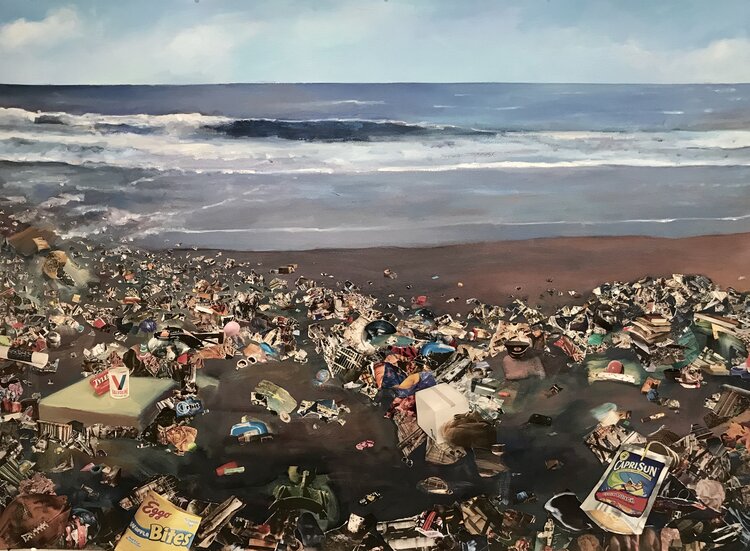
Scientist Jan Zalasiewicz states in the Anthropocene Review: “Humans and human organisations form part of it, too — although we are not always as much in control as we think we are, as the technosphere is a system, with its own dynamics and energy flows — and humans have to help keep it going to survive.”
The exhibition includes Elena Soterakis’s paintings of the contemporary landscape. That landscape is one of ruins and littered by human behavior. Valvoline Beach fuses oil paints and actual garbage to embody the actual landfill it portrays. Sharon Levy’s small lightbox and landscape painting is called Scenic: Smog, Sunset comprised eerily glows slowly over time as a sunrise and sunset, similar to a computer screen, reflecting the vibrant colors created in LA skies out of light pushing off smog pollution. Echoing these strange skies is a central sculpture by Maria Agureeva, Untitled, comprised of plastic, wood, and synthetic fabric of glittering, hardened residue wrapped around a tree branch, incorporating garbage with the pop colors of fast-food wrappers. In Agureeva’s work, the garbage appears to overtake nature.
Accompanying these multimedia pieces is FEMMEBIT’s curated video reel by the creator of WOAH and cofounder of FEMMEBIT, presenting digital experiences of our disturbing new reality. Video works exhibit eclectic consumption, loss of environment, mass consumerism, visual maximization, and more.
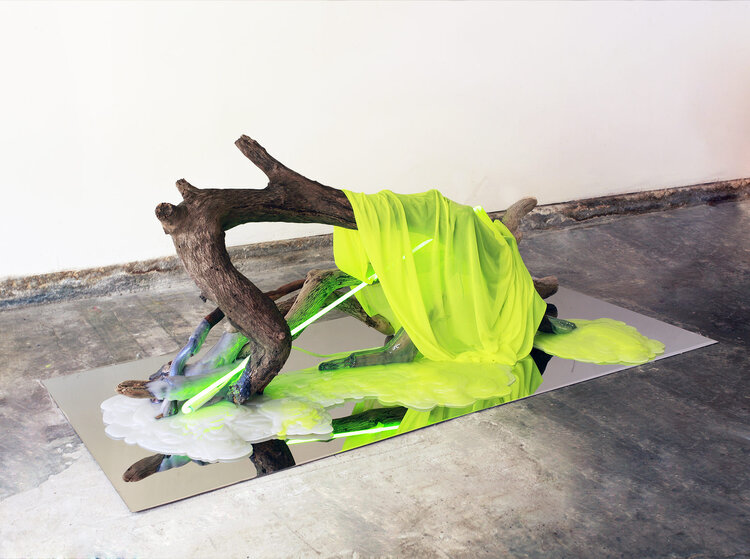
The all-female, artist-run organizations SUPERCOLLIDER X FEMMEBIT both shine a light on underrepresented viewpoints in popular culture— through interdisciplinary approaches to the art practice within LA to create unexpected collisions between science and art, while embracing emerging technologies of AR, VR and other new media. For the exhibition Technosphere, SUPERCOLLIDER adds a science-minded twist to FEMMEBIT’s curations, presenting artworks inspired by science research of climate change, sustainability models, systems thinking and more.
SUPERCOLLIDER X FEMMEBIT present a multimedia exhibition of works that reflect elements of the technosphere: synthetic devices, like electronic cables in virtual simulations that are interwoven from natural systems and make reference to the biosphere. These works merge manmade resources in some instances, while in other cases, they remind us of the interrupting force of human production on our home planet.
Curatorial writings, Janna Avner & Richelle Gribble | Photo Credit: Elí Joteva
